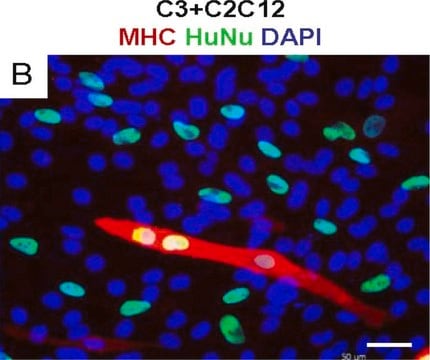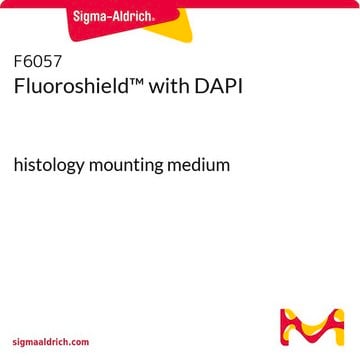MAB1276
Anti-Nuclei & Chromosomes Antibody, histone H1 protein, clone 1415-1
clone 1415-1, Chemicon®, from mouse
Sinônimo(s):
Anti-H1.4, Anti-H1E, Anti-H1F4, Anti-H1s-4, Anti-HIST1H1E, Anti-RMNS, Anti-dJ221C16.5
About This Item
Produtos recomendados
fonte biológica
mouse
Nível de qualidade
forma do anticorpo
purified antibody
tipo de produto de anticorpo
primary antibodies
clone
1415-1, monoclonal
reatividade de espécies
human, rat
fabricante/nome comercial
Chemicon®
técnica(s)
ELISA: suitable
immunocytochemistry: suitable
immunohistochemistry: suitable (paraffin)
western blot: suitable
Isotipo
IgG2a
nº de adesão NCBI
nº de adesão UniProt
Condições de expedição
wet ice
modificação pós-traducional do alvo
unmodified
Informações sobre genes
human ... H1-1(3024)
Especificidade
Stains nuclei of all human cell types and also stains chromosomes diffusely in metaphase cells. Nuclear staining in interphase cells is intense and diffuse. Antibody reacts with rat cells {Bendeck, 2001}.
Imunogênio
Aplicação
forma física
Nota de análise
POSITIVE CONTROL:
Human tonsil
Informações legais
Não está encontrando o produto certo?
Experimente o nosso Ferramenta de seleção de produtos.
Código de classe de armazenamento
12 - Non Combustible Liquids
Classe de risco de água (WGK)
WGK 2
Ponto de fulgor (°F)
Not applicable
Ponto de fulgor (°C)
Not applicable
Certificados de análise (COA)
Busque Certificados de análise (COA) digitando o Número do Lote do produto. Os números de lote e remessa podem ser encontrados no rótulo de um produto após a palavra “Lot” ou “Batch”.
Já possui este produto?
Encontre a documentação dos produtos que você adquiriu recentemente na biblioteca de documentos.
Active Filters
Nossa equipe de cientistas tem experiência em todas as áreas de pesquisa, incluindo Life Sciences, ciência de materiais, síntese química, cromatografia, química analítica e muitas outras.
Entre em contato com a assistência técnica







